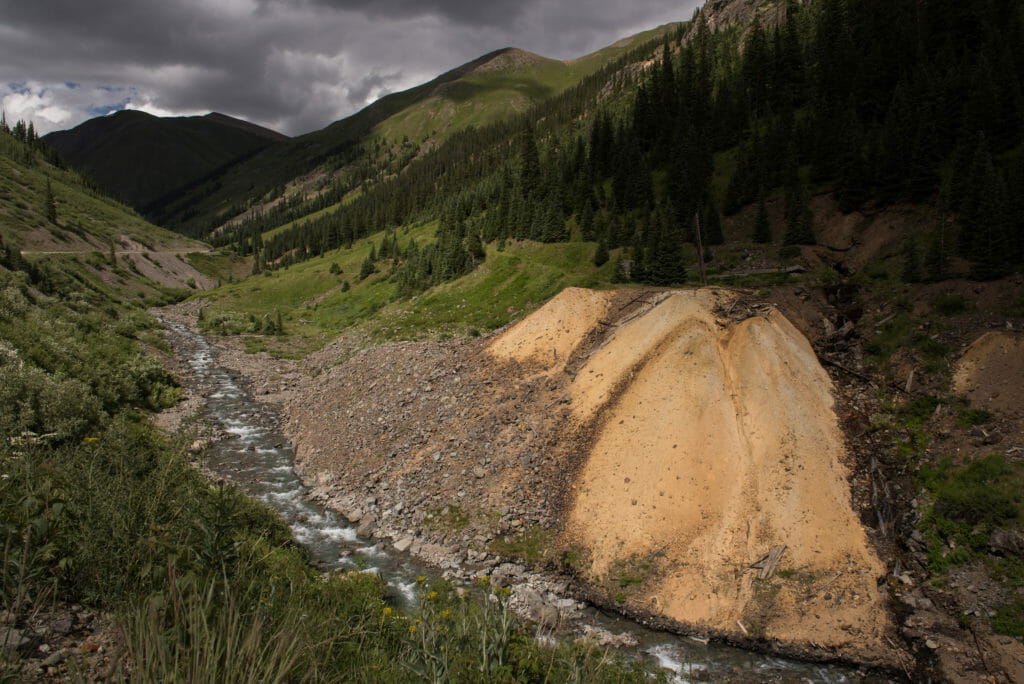
Critical Minerals Report
A conservation perpective
Trout Unlimited, National Wildlife Federation and Backcountry Hunters & Anglers, August 2020
Overview & Introduction
Critical minerals are found extensively in everyday life. They’re in the car you drive, the cell phone you scroll through, wind turbines and solar panels generating electricity and the television giving you a weather forecast and the news each morning. They’re used in airplanes, precision guided missiles and submarines. Importantly, they are also vital components for renewable energy technologies that can help address climate change and its associated consequences for fish and wildlife habitat.

They are, as their name implies, critical to the national and economic security of the United States. But their extraction and production comes with impacts.
The result of a mine established in the wrong place, or done in the wrong way, can impair fish and wildlife habitat, hunting, fishing and outdoor recreation opportunity, and local businesses dependent on healthy public lands. Irresponsible mining can send poisonous sludge down rivers and pollute lakes and watersheds for centuries, if not longer. It can cost billions of dollars to clean up. Conversely, a mine in the right place, done responsibly, can minimize its footprint and be an economic and social asset to a rural community.

Critical mineral deposits – the metals and nonmetals buried miles-deep inside ancient geologic seams or lingering near the surface – are found around the globe. Some can be mined as ore rather simply; many are mined with other minerals and then subjected to a series of processing stages to enable their extraction and isolation. Some of those mineral deposits are in open, dry flatland, away from precious water sources and fragile fish and wildlife. Other deposits are in more sensitive locations, like headwaters that are the source of clean, cold water for fish and wildlife, as well as drinking water for communities.

That’s why creating sensible public policy addressing critical minerals is so important. The federal government’s official critical minerals list recognizes 35 critical minerals – two of which are subgroups of metals, adding an additional 23 minerals for a total of 56. They include household names such as titanium, aluminum and helium, and ones as obscure as rhenium, rubidium and strontium. Several minerals on the list, including cobalt and lithium, are crucial to renewable energy development and high-tech industries.
As it stands today, the United States (U.S.) is import-reliant for 31 of the 35 minerals, including places with often unstable governments that lack adequate labor and environmental laws. Further, the U.S. relies completely on places outside its borders for 14 critical minerals. The need for some minerals, such as lithium – a necessary component in electric-vehicle batteries – is so great that manufacturers are vocally concerned about the potential for supply chain disruptions.
In June of 2019, and in response to Executive Order 13817, the Department of Commerce released a report outlining a “Federal Strategy to Ensure Secure and Reliable Supplies of Critical Minerals.”
Within the report are general recommendations to advance research and development efforts, increase domestic activity across the supply chain, streamline permitting and grow the American critical minerals workforce. The report also assesses ways to develop critical mineral recycling and reprocessing, analyze options for developing critical minerals through trade with allies, map the nation’s critical mineral deposits and recommendations to streamline permitting to develop extraction leases.
Of specific note to anglers, hunters and outdoor recreationists of all stripes, the report included 61 recommendations, including calls to action affecting public lands and watersheds. These include revising public land planning processes, streamlining environmental reviews, and seeking recommendations to reduce “unnecessary” impacts that protected public lands like wilderness areas and National Monuments have on mining.
This is a complex issue and we need informed, collaborative solutions to chart a responsible path forward – we present this report as a step in that direction.


